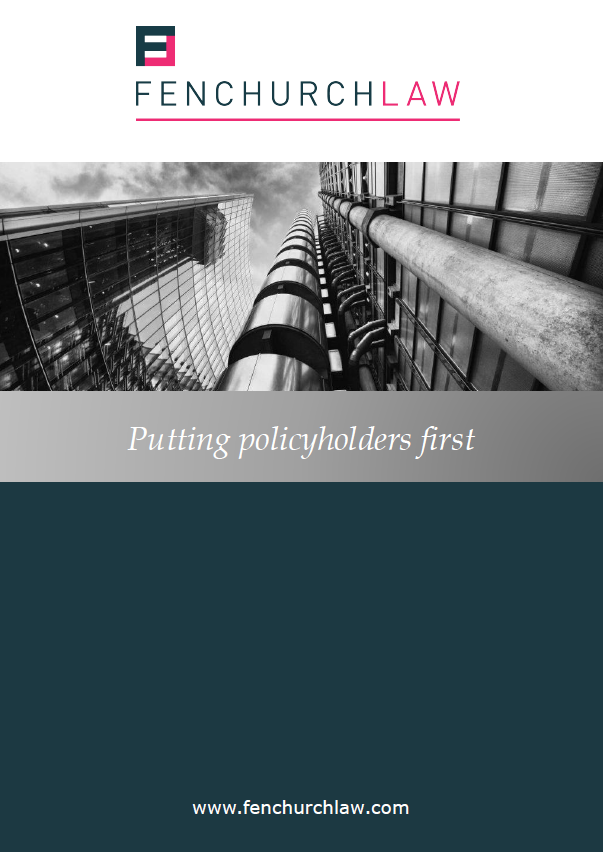
Legal Expenses Insurance – A Brief Introduction
After the Event Insurance (“ATE”) is an insurance policy available to litigants to cover their disbursements and their liability to pay adverse costs in the event that the case is lost. This article will also discuss the latest Supreme Court decision about litigation funding agreements (“LFAs”) and how it may impact ATE insurance.
ATE insurance is not cheap, and obtaining it is not always straightforward. Before ATE insurance can be secured, the underwriter will evaluate the merits of the case. To do so, the insurer will generally require an opinion from counsel outlining the strengths and weaknesses of the insured’s case. The underwriter will also likely want to be provided with (amongst other things) any costs estimates that have been filed, information about the opponent’s ability to pay, and the details of any conditional fee agreement, damages based agreement (“DBA”) or LFA (more on that later).
Premiums and their recoverability
ATE premiums can vary significantly depending on different factors. It naturally follows that, if the risk is higher, the premium will increase, the situation will be the same if a greater level of cover is sought. Often, premiums will be “stepped” or “staged” and increase as the case proceeds. This reflects that the risk of paying out increases the closer the matter gets to court.
In policies issued before 1 April 2013, ATE premiums are recoverable. However, after this date, premiums are only recoverable from the other side as costs in certain cases (mesothelioma claims; publication & privacy proceedings; and insolvency-related proceedings where the policy was issued prior to 6 April 2016).
ATE as security for costs
ATE insurance can be used as security for costs in certain circumstances. In Premier Motorauctions Ltd (in liquidation) & Anor v Pricewaterhousecoopers LLP [2017] EWCA Civ 1872, the Court held that an ATE policy could, in principle, be considered as sufficient security for costs. However, the ATE policy did not offer sufficient protection in that case, because it was vulnerable to being avoided for misrepresentation or non-disclosure. The Juge, in that case, noted that the words of the ATE policy were important, and if the insurer’s ability to avoid was restricted, it may be sufficient security.
This case was cited in Saxon Woods Investment Ltd v Francesco Costa and others [2023] EWHC 850, where the ATE insurance policy contained an endorsement that placed restrictions on the insurer’s ability to avoid. The Judge found that the anti-avoidance endorsement (“AAE”) did not need to explicitly state that the insurer could not avoid in the event of fraud or dishonesty provided that was indeed its effect, but that the words had to be sufficiently clear, as such, to indicate “an extraordinary bargain”. In Saxon, the policy was expressed as non-voidable and non-cancellable, and the insurer agreed to indemnify the insured for any claim under the policy “irrespective of any exclusions or any provisions of the Policy or any provisions of general law, which would otherwise have rendered the policy or the claim unenforceable…”. The court held that the policy could be used as security for costs.
Avoidance of an ATE policy
A policy with an AAE is likely to come at a price, and for many insureds the premium will be prohibitively high. In the event that an insured’s policy does not have an AAE endorsement, insurers of an ATE policy can avoid it for all the usual reasons, e.g. non-disclosure or misrepresentation. This was confirmed in Persimmon Homes Ltd & Anor v Great Lakes Reinsurance (UK) plc [2010] EWHC 1705 (Comm). In that case, the insurer was entitled to avoid the policy due to material misrepresentations and non-disclosures. The alleged material non-disclosures included, amongst other things, bankruptcy and untruthful statements (which had come to light in the Judgment) and undisclosed financial difficulties.
ATE and LFAs
Litigation funding agreements are where a third-party funder agrees to fund the litigant’s costs. In the event of success, litigation funders are typically compensated in three different ways:
- A percentage of the proceeds, e.g. the funder claims 30% of the proceeds
- A multiple of the invested amount, e.g. the funder obtains 1.5 x the invested amount
- A combination of the above, e.g. the funder obtains either 30% of the proceeds or 1.5x the invested amount (whatever is the greater).
Many third-party funders require the litigant to obtain ATE insurance so that in the event of losing, the costs that the litigant is responsible for are covered, protecting both the funder and the litigant (a third-party funder is generally only liable for costs up to the amount it invested, although a discussion on the ‘Arkin’ cap and the case of Chapelgate Credit Opportunity Master Fund Ltd v Money [2020] EWCA Civ 246 is beyond the scope of this article).
LFAs, and the decision in Paccar
In Paccar Inc and Ors v Road Haulage Association Limited and UK Claims Limited [2023] UKSC 28, the Supreme Court examined s 58AA of the Courts and Legal Services Act 1990 (“CSLA”) and considered whether LFAs were DBAs for the purpose of s 58AA(3)(a), which stated that:
a damages-based agreement is an agreement between a person providing advocacy services, litigation services or claims management services and the recipient of those services which provides that—
(i) the recipient is to make a payment to the person providing the services if the recipient obtains a specified financial benefit in connection with the matter in relation to which the services are provided, and
(ii) the amount of that payment is to be determined by reference to the amount of the financial benefit obtained.
The Court found that third-party litigation funders were providing “claims management services”, and LFAs where the funder is remunerated on a percentage of the proceeds basis would thus be caught by s 58AA(3).
LFAs that remunerate the funder on a multiple of the invested amount basis are not caught by s 58AA. S 58AA states that a DBA cannot be enforced unless it complies with the requirements of s 58AA(4), including regulations (the Damages-Based Agreements Regulations 2013 (“the DBA Regulations”)). In summary, this means that an LFA will be unenforceable if the funder is remunerated on a percentage of proceeds basis (unless it complies with the DBA Regulations, which is unlikely).
Following this decision, funders and litigants will need to ensure that LFAs either are not DBAs (i.e. providing for a multiple of investment model of remuneration) or are compliant with the regulations. If the LFA is not re-negotiated and is thereby void, ATE insurers should be notified of this, as this could result in a change to the risk and could lead to the insurer avoiding the policy.
Grace Williams is an Associate at Fenchurch Law
Other news
The Fenchurch team reflects on a year in the insurance legal sector
18 December 2025
This year, we were pleased to contribute to Insurance Post’s Claims and Legal Review 2025, with Senior Partner, David…
You may also be interested in:
Archives
Categories
- Uncategorized
- The Good, the Bad and the Ugly
- Fenchurch Law Webinars
- Stonegate
- Newsletter
- Events
- Webinars
- Comparing German and English Insurance Law – A Series
- Construction Risks
- Operations
- Business Development
- Construction & Property Risks
- News
- International Risks
- Legislation
- Financial & Professional Risks
- Case Law
- Professional Risks
- Press Release



